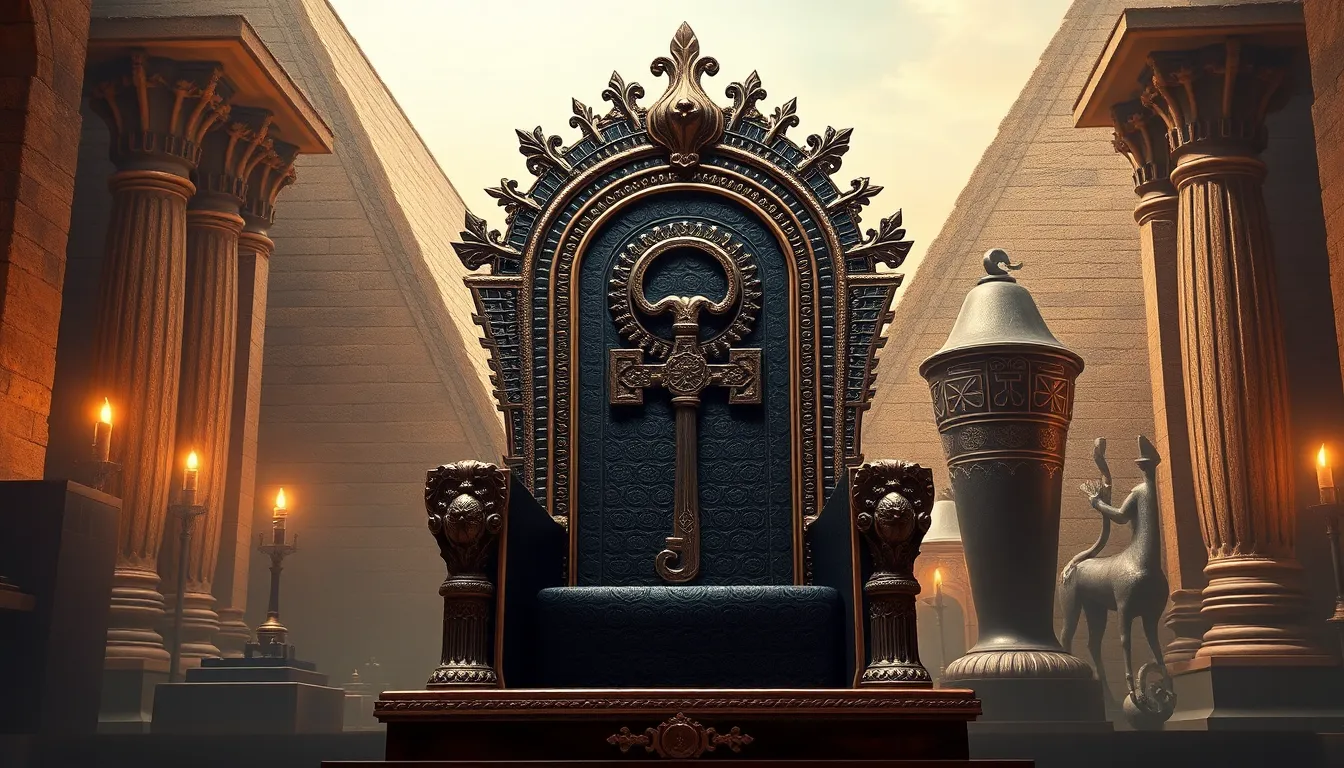Table of Contents
ToggleIn a world where power and freedom often clash, the concept of the mystic key throne emerges as a fascinating symbol of authority and liberation. This intriguing idea intertwines the essence of leadership with the quest for personal autonomy, inviting exploration into how these two forces can coexist.
As societies evolve, the mystic key throne represents not just a seat of power but also a pathway to understanding the delicate balance between governance and individual rights. Delving into this topic reveals insights into historical contexts and contemporary implications, making it a compelling subject for anyone interested in the dynamics of control and freedom. Embracing the mystique of the throne can lead to a deeper appreciation of liberty in an ever-changing landscape.
Overview of Mystic Key Throne and Liberty
The mystic key throne represents a profound symbol of leadership and individual freedom. It signifies the potential for power to connect with personal autonomy, illustrating that authority does not inherently conflict with liberty. Historical instances showcase figures who wielded influence while championing the rights of individuals, reinforcing the idea that effective governance can coexist with respecting personal freedoms.
Contemporary examples reveal ongoing struggles for balancing authority and autonomy. In various societies, movements advocate for personal liberties against oppressive regimes, proving that the quest for freedom is timeless. Understanding these dynamics sheds light on how governance shapes individual rights and how those rights can influence leadership.
The concept of liberty encompasses not only personal freedom but also the pursuit of collective welfare. The mystic key throne thus serves as a reminder that true authority lies in the ability to empower individuals. It prompts a reconsideration of how power can be both a tool for control and a vehicle for empowerment, underscoring the necessity for dialogue in navigating these complex relationships.
Historical Context

The mystic key throne and concepts of liberty have deep historical roots. Understanding their origins and evolution provides insight into their enduring significance in governance and personal freedom.
Origins of Mystic Key
The mystic key throne originated in ancient cultures as a symbol of divine authority and governance. Emperors and kings often used this imagery to legitimize their rule, intertwining spiritual significance with political power. In ancient Egypt, pharaohs were perceived as living gods, using symbols like the ankh to represent their sovereignty and connection to the divine. Similarly, in Mesopotamian civilizations, kings held keys to temple gates, signifying their exclusive access to sacred spaces and their role as intermediaries between deities and people. The mystic key eventually evolved into a metaphor for the interplay between leadership and individual autonomy, highlighting that rulers, when aligned with ethical principles, can empower communities while respecting their freedoms.
The Concept of Liberty
The concept of liberty has significantly evolved throughout history, representing both individual rights and social responsibilities. In the Enlightenment era, philosophers such as John Locke and Jean-Jacques Rousseau emphasized the importance of personal freedom in developing social contracts. Locke’s notion of natural rights laid the groundwork for modern democracy, advocating for life, liberty, and property. Rousseau further expanded on these ideas, asserting that true liberty involves collective welfare alongside personal freedoms. In contemporary society, liberty embodies the ongoing struggle for individual rights amid governance, with movements for civil rights and social justice reinforcing the premise that liberty is not solely the absence of oppression but the presence of equitable opportunities. Thus, the concept of liberty aligns closely with the symbolism of the mystic key throne, emphasizing a framework where authority can enhance personal freedoms.
Significance in Modern Culture
The mystic key throne and the concept of liberty play a crucial role in contemporary society, influencing various movements and ideals. Their symbolism resonates with ongoing discussions of authority, governance, and individual rights.
Symbolism of the Mystic Key Throne
The mystic key throne symbolizes the balance between authority and personal freedom. This symbol embodies leadership that serves to empower rather than dominate. In modern contexts, it appears in art, literature, and political discourse, representing the ideals of ethical governance.
- Authority: The throne signifies legitimate authority grounded in ethical leadership.
- Empowerment: It suggests a nurturing form of governance that respects individual autonomy.
- Unity: The symbol fosters a sense of community while emphasizing the importance of participatory governance.
- Representation: The mystic key throne serves as a reminder of leaders who prioritize public welfare and respect individual freedoms.
Interpretations of Liberty Today
Liberty takes on various meanings in today’s world, shaped by cultural, political, and social dynamics. Modern interpretations continue to reflect the ideals articulated by Enlightenment thinkers, impacting global movements for justice.
- Human Rights: Liberty now encompasses basic human rights, allowing individuals to express themselves freely without fear of persecution.
- Equality: The quest for equitable opportunities aligns with the broader understanding of liberty and fosters inclusivity.
- Social Justice Movements: Contemporary movements advocate for the protection of marginalized voices, highlighting that liberty involves collective empowerment.
- Digital Freedom: As technology evolves, liberty also pertains to data privacy and individual autonomy against surveillance.
The discussion around the mystic key throne and liberty illustrates the ongoing relevance of these concepts, framing them as essential components of modern cultural narratives.
Artistic Representations
Artistic representations of the mystic key throne and liberty manifest in various forms, reflecting the intricate connections between authority and personal freedom. The interplay of these themes enriches both literature and visual arts, offering profound insights into societal values.
Literature and Poetry
Literature and poetry consistently explore the mystic key throne’s symbolism and liberty’s essence. Poets like William Blake and Walt Whitman illustrate the tension between authority and autonomy, showcasing characters who seek personal freedom in authoritarian landscapes. Novels like “1984” by George Orwell present dystopian visions that starkly contrast the ideals of liberty. These literary works evoke critical discussions about power structures and individual rights, highlighting the ongoing relevance of these themes. They challenge readers to contemplate the role of governance in determining personal freedoms, often reflecting the historical struggles surrounding these concepts.
Visual Arts
Visual arts vividly depict the mystic key throne and liberty, utilizing symbolism to convey deeper meanings. Artists like Frida Kahlo and Diego Rivera craft pieces that emphasize the relationship between authority and individual expression. Kahlo’s self-portraits frequently incorporate themes of personal struggle against societal norms, while Rivera’s murals celebrate the collective achievements of the people in the face of oppression. Public art installations often engage with contemporary issues of liberty, such as human rights and equality. These visual representations invite viewers to ponder the ongoing quest for freedom and the responsibilities that accompany power, cementing the mystic key throne as a potent symbol of ethical leadership and personal autonomy.
The mystic key throne and the concept of liberty embody a profound relationship that continues to shape societies. Their interplay highlights the necessity of ethical leadership that respects individual rights while maintaining authority. As history shows and contemporary movements illustrate, the quest for freedom remains a vital pursuit.
Artistic expressions further enrich this dialogue, revealing the nuances of power and autonomy. By understanding these dynamics, individuals can engage more thoughtfully in discussions about governance and personal freedoms. The ongoing exploration of these themes is essential for fostering a society that values both authority and liberty.




